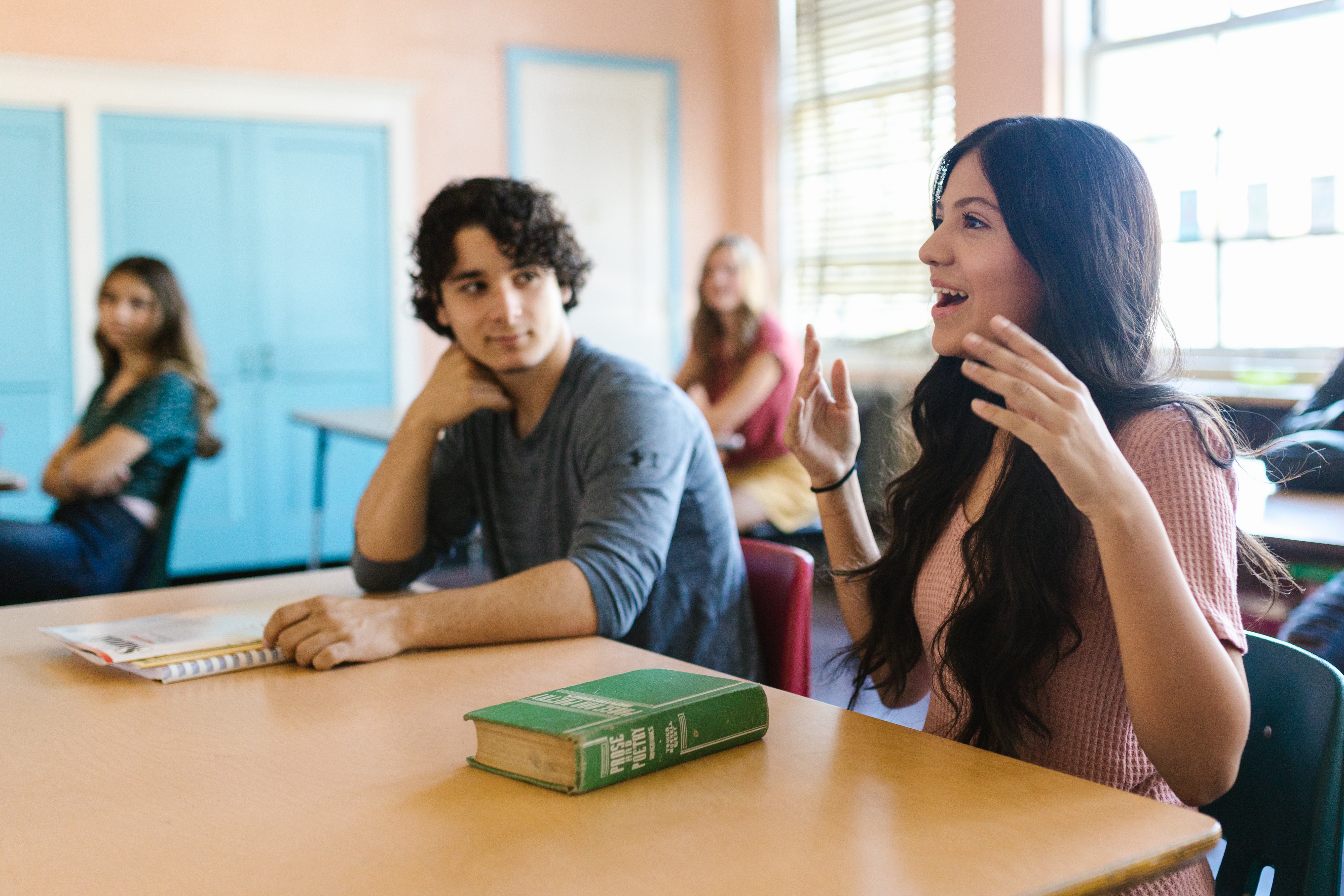Is Your District Asking Students How ESSER Dollars Should Be Spent?
ARP ESSER Funds are coming into your school district. Learn how school leaders at this XQ school centered student voice and insights in their budgeting.

As part of the American Rescue Plan, President Biden made a historic investment in public schools across America. ARP’s Elementary and Secondary School Emergency Relief (ESSER) funding represents the largest single investment in schools ever made by the federal government. And with that investment, we have a once-in-a-lifetime opportunity to inspire the meaningful and measurable change public education desperately needs.
More than that, ESSER funding marks a moment for us to rethink schools together. Districts that receive funding through ESSER are required to collect input from a wide variety of stakeholders—including families and parents—giving communities a real opportunity to redesign high schools to center equity and adapt to the context of its locality. (You can check to see how much money your state is getting with our ARP allocation tool!) Most importantly, school districts are working to include student voice in the funding process to make sure that schools adapt to their students and their needs.

Using ARP and ESSER Funds as a Learning Experience
Elizabethton High School—an XQ school located in Elizabethton, Tennessee—received ESSER funds to help the school recover after a year of pandemic protocols and remote learning. But Elizabethton school leaders did more with their $5.7 million investment than purchase supplies and hire new staff. These school leaders used it as an opportunity to elevate student voice and provide students with a hands-on lesson in budgeting, prioritizing, and consensus-building.
“Our mission is to build a culture for learners to think and act as change-makers. This project embodied our mission,” said Dustin Hensley, the school’s library media specialist and special projects lead. “This has been a great learning experience.”
Centering Student Experience During Reopening
As part of their outreach to the community, leaders at Elizabethton decided to include students by sending out a survey. But then two students—incoming 12th graders Maggie Cole and Morgan Guinn—asked if they could meet with Superintendent Richard Van Huss and the high school principal, Jon Minton, in person to have a wider conversation about student needs and priorities.
Before the meeting, Maggie, who serves as the student liaison to the school board, and Morgan, the student body president, talked to a wide variety of their classmates about their ideas for improving the school.
“It’s important for us that students get a say in what happens at our school,” said Maggie. “We want our school to be as student-friendly as possible, especially after the pandemic.”

Students’ top priorities were: remodeling the bathrooms; hiring more counselors; adding more Advanced Placement classes; purchasing more tablets, printers and other technology; providing copies of “Just Mercy” by Bryan Stevenson for English classes; more field trips; and buying new instruments and other equipment for the school band.
They also suggested projects to benefit other schools in the district. The middle school, for example, built in the 1940s, could use modernization and more classroom space, students said.
Superintendent Van Huss showed the students the district budget, explaining the funding streams and expenditures. He talked about how budget decisions are made, how priorities are set, the importance of accountability, and the many rules that govern public budgets.
“The budget is a lot more complicated than we thought it was,” Maggie said. “There’s so much work that goes into it. … But the superintendent really listened to us. He was really committed to making student voice a part of this process.”
ESSER Funding Defined By Student Choice
Just about all of the students’ ideas were adopted. The most important one, perhaps, was the boost in counseling and mental health services. Nationwide, students of all ages reported increased depression, anxiety, and stress during the pandemic. Some lost family members to Covid-19. Some experienced economic hardship or even homelessness when their parents lost jobs. Others had to tend to younger siblings while their parents returned to work, all while keeping up with their own homework and online classes. Nearly all young people experienced some degree of loneliness and isolation during remote learning.

Even before the pandemic, leaders at Elizabethton recognized a crisis in student mental health. The school recently opened a Student Center—a casual, drop-in space on campus where students can relax, study, and if they want, meet with counselors or social workers who can help them with college and career planning or mental health challenges.
The center, located in the school’s former main office, includes round tables and a café-like setting, meant to encourage face-to-face conversations. And thanks to the students’ advocacy on how to spend ESSER funding, it will soon include two additional counselors.
Prioritizing Student Voice After ESSER Funding
“We want to remove barriers to collaboration,” said Sheri Nelson, the school’s assistant principal. “This predates the pandemic, but we feel it’s even more needed now.”
The students’ input was invaluable, Nelson said. The students had ideas that administrators hadn’t considered, like upgrading the campus bathrooms.
“We got a fresh perspective,” Nelson said, noting that the school will continue gathering input from students on budget issues. “Any time you bring a new perspective to the table, you see what you’ve been missing.”
The exercise was a great example of the school’s focus on student voice and hands-on, project-based learning. Students not only learned the real-life implications of abstract financial matters, but they learned how to advocate for their own needs and work with others to ensure those needs are met.
“This project was important because it speaks to our core values,” Nelson said. “It’s our goal to teach our students to be self-advocates, to be communicators. That’s the best way for us to meet their needs, so they can be successful in high school and beyond.”
To hear more about students and their thoughts on how to spend ARP ESSER funding check out the student testimonials on Choose High School Now: xqstaging.wpengine.com/rethinktogether/arp-esser/
Are you inspired by Elizabethton High School and its focus on student voice? Learn more about Elizabethton and all the XQ Schools at: xqstaging.wpengine.com/schools
Authors:

Kenneth Coleman is a post-baccalaureate resident and former intern at the XQ Institute. Previously, he served as a research assistant at the University of Chicago. Additionally, he volunteered at the Invisible Institute during their exhibit highlighting the police shooting of Harith Augustus and at LadderUp where he provided tax assistance services to low income individuals and families. He holds a bachelor’s degree in Political Science from the University of Chicago where he focused on education, housing, and wealth inequality.

Carlee Strathmann is a post-baccalaureate resident and former Emerson Collective youth intern at the XQ Institute. Previously, she served as a research assistant with the Supporting Transformative Autism Research (STAR) team at the University of Virginia. She holds a bachelor’s degree in Education from the University of Virginia, focused on Youth and Social Innovation and Social Entrepreneurship.









